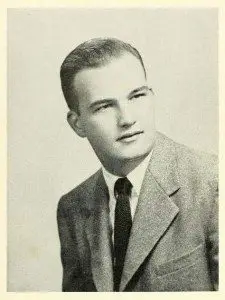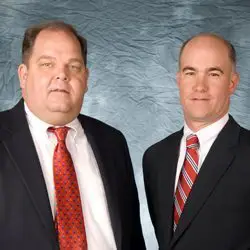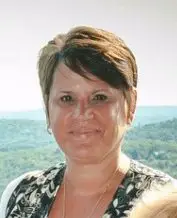Staying Power: A Conversation with The Crowley’s
The following blog post is an article published last month in IDMi Magazine.
When one considers the changes in technology in the analog and digital imaging industries over the past four decades, it seems nearly impossible that a small firm has been able to survive – and thrive – while remaining an independent entity in a very narrow, niche market. Yet for 36 years, The Crowley Company has been a staple in the worlds of archival preservation, digitization and records management. Today, the future seems no less bright as the firm’s ownership continues to seek opportunities to serve an industry they’ve come to love.
Company History
Christopher (Chris) and Patrick (Pat) Crowley are two of the four children of Jerome F. (Jerry) Crowley. In 1980, Jerry left a comfortable position as a manufacturer’s rep in the micrographics industry to found J.F. Crowley, Inc.

in Maryland (USA), primarily selling analog hardware, supplies and microfilm to the U.S. government. Chris joined the company in 1982, “tossed into the deep end” of sales. “There was no hand-holding,” remembers Chris. “You worked. You delivered. You moved on to the next project.”
It was Chris’ doggedness about pursuing a digitization project for the U.S. Postal Service in 1986 that became the company’s first step into imaging services. In 1988, Pat joined the company and focused on managing the fledgling service bureau while Jerry and Chris sold hardware and services.
Through name changes (J.F. Crowley, Inc. to Crowley Micrographics to today’s The Crowley Company), recessions, economic booms, dramatic changes in technology (anyone remember when a computer required its own room?), major acquisitions (Mekel Technology, Extek Duplicators, HF Processors, Wicks and Wilson) and the 1996 passing of its founder, The Crowley Company has stayed the course and, in some instances, charted new territory.
I sat down with Chris and Pat to discuss the company today and where it might be in the future.

Q: What do you think has kept the company moving ahead when many others are closing their doors or combining forces?
Chris: I think we do a good job of looking ahead and being able to adjust to the demands for our products. We have the ability, through our manufacturing arms, to be innovative with the timely development of new products and aren’t necessarily entrenched in doing things “the old way.” We’re always looking at new technology and trying to figure out how to do things better, both in-house and for our clients. I think we’re also the only firm in the industry that sells, manufactures and uses what we sell and manufacture. It’s a huge advantage; in many ways, we’re our own customer on both the hardware and service bureau fronts which helps us to understand our customer’s pain points firsthand.
Pat: Our diversification. We’ve developed as a company from manufacturing rep to manufacturing rep and service bureau to manufacturing rep and service bureau and manufacturer. This idea of constant evolution is our biggest challenge…and also our biggest opportunity.
We’ve proven our ability to be successful over the years through the continuing introduction of new products and services. One example of this is the UScan+ [Universal Film Series scanners], which allowed us to compete in the universal film (the old reader-printer) market. Three years ago, we didn’t exist in that market. Today, we’re one of the top three companies and gaining market share each month.
Q: What types of adaptations do you see in the future?
Pat: The development of the MACHCAM 71MP machine vision camera has opened up an entirely new market for us in that we’ve engineered a high resolution camera that can be used in our own products but which has also been designed for use in outside products. We’re in the process of finalizing the development of IMAGEhost, a microfilm hosting solution which will allow libraries and other organizations with smaller budgets to have their microfilm collections scanned and hosted online without the huge expense of a new IT infrastructure or full-on digitization. And we’ve got a new overhead document scanner (ODS) that will be released later this year that fills the void between the high-end archival scanners and the very inexpensive but lower-image-quality desktop scanners that are available at box stores. Software may be another area of diversification.
What I like is that we have the ability to be flexible and grow while still sticking close to our core business of imaging.
Chris: I agree. We will continue to diversify outside of our usual verticals – primarily through our manufacturing divisions – with new products that remain in our core wheelhouse but which have uses outside of the preservation and digitization markets. And oddly enough, by maintaining our analog roots, we’ve become one of the only firms in the world that still manufactures and sells microfilm duplicators and processors and continues to offer the writing of digital-born images to microfilm for long-term preservation.
What excites you most about the future of the company/industry?
Chris: I think the ongoing push for the standardization of digital formats and content delivery is really going to pay off. As those standards become, well, more standard, it will allow us to develop more homogenous products and to be more consistent with service offerings and pricing. It will help to even the playing field, which is particularly important in the service bureau.
I’m also excited about the future of our international presence. The addition of Wicks and Wilson to our manufacturing division several years ago has not only strengthened our R&D efforts, it has enhanced our international hardware sales efforts both with in-house staff and an expanded reseller network that continues to be an area of growth.
Pat: I’m really excited to see where the new camera takes us. Another area that I see with growth potential is our partnerships, particularly in the service bureau. As more companies begin to drop services to specialize in specific areas, it creates opportunities to partner up as a prime or a sub-contractor. In many cases, we provide the conversion services while another company provides the meta data, the post-processing, the hosting or some other combination of digital collection capture and management. We’ve had long-lasting partnerships among our hardware vendors, such as those with Zeutschel, Qidenus and InoTec, and are beginning to build those same types of relationships with the service bureau.
What concerns you the most?
Pat: In the service bureau world, more companies are jumping into the cultural heritage space, which creates additional competition. This forces us to be ultra-focused on our strengths: good customer service and the ability to provide both digital and analog services at competitive rates. Staying focused also means resisting the urge to take on smaller conversion projects just for the sake of making a dollar. Our specialties are large volume projects (from thousands to millions of images per projects) and rare/fragile collections from either hard materials or microform.
Chris: Money. And by that I mean the economy. Many of the efforts in digitization and preservation are government- and benefactor-driven and financed. If the economy loses strength, these areas are often considered luxuries (although we strongly disagree, of course) and are among the first line items to be reduced or eliminated. That said, we’re fortunate in that when capture hardware sales go down, our service bureau sales tend to go up, giving us a unique ability to better weather the storms than most.
How is Crowley best poised for long-term success?
Pat: First and foremost, through our staff, which has been extremely stable – particularly in management and manufacturing. This can’t be over-valued. Secondly, and as has been mentioned, through evolving product lines. One example of this is the Mekel Technology MACH-series microfilm and microfiche scanners. While the boxes haven’t changed in almost twenty years, inside there are faster cameras and improved light sources. When coupled with custom software such as QuantumScan and QuantumProcess that reflect new technologies, these scanners become even better than the mechanical changes. Down the line, something like the 71 megapixels of the MACHCAM should bring even higher resolution and faster speeds.
We always ask ourselves “What do we do well” and then try to improve on this internally and externally with our customers. On the flip side, we work hard to correct those things that we may not do as well as we’d like but which we consider essential to our business.
Chris: We have the luxury of being able to leverage the three main parts of our company – R&D/manufacturing, service bureau and technical support – to help each other. There’s a synergy between the divisions and often – in helping ourselves – we end up with something new to offer our customers. The Quantum software Pat mentioned is a perfect example of this. It was developed to increase the efficiency in our own service bureau and has since become a standard feature on the Mekel scanners. These synergistic divisions also mean that we don’t have to outsource for a lot of services. By keeping things in-house, we don’t have to worry about resources evaporating.
Finally, we have an R&D staff that is great mixture of engineering veterans and those shortly out of college. The ability to pair experience with new knowledge and a fresh perspective has led to some exciting developments.
About The Crowley Company
The Crowley Company is a world leader in analog and digital imaging systems and services and is – to our knowledge – the only blend of manufacturer, distributor and service bureau in the industry. This dynamic combination allows Crowley to provide multi-layered solutions to the complexities of archival preservation and records management. The company has locations in Frederick, Maryland, San Dimas, California and Basingstoke, UK.

